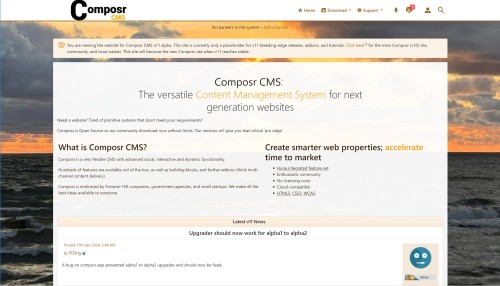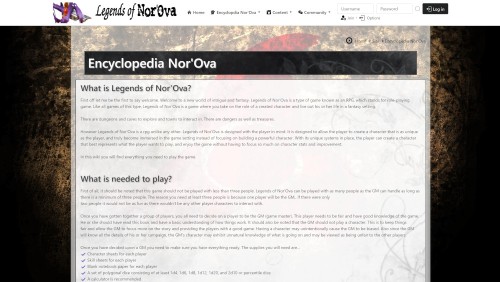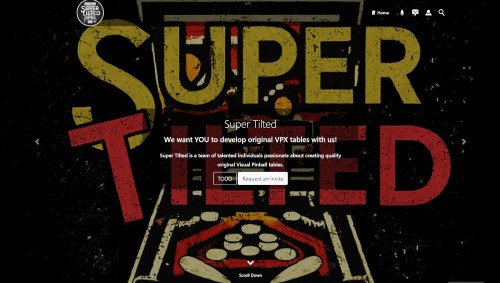Featured Sites: A-Z Index
H
Newest 10 Entries
| Question | What are redirects and how can I use them for subsites? |
|---|---|
| Answer | Redirects let you create custom URL paths that point to different zones and pages within your site. Examples:
Go to Admin Zone > Structure > Redirects. |
| Question | What are virtual roots and how do I use them? |
|---|---|
| Answer | Virtual roots let you make a sub-category within a Composr module (e.g., downloads) appear as the top-level category. This is useful for creating separate "databases" of content for different subcommunities. To create a virtual root:
|
| Question | Can I have subsites and subcommunities within a single Composr installation? |
|---|---|
| Answer | Yes, Composr offers various tools to create subsites and subcommunities within a single installation:
|
| Question | What is the difference between a central site and a satellite site in an M.S.N.? |
|---|---|
| Answer | The central site hosts the shared forum, member database, and netlink system. It is the core of your M.S.N. Satellite sites are the additional websites within your network. They connect to the central site for member information and forum access. |
| Question | What are the advantages and disadvantages of using an M.S.N.? |
|---|---|
| Answer | Advantages:
Disadvantages:
|
| Question | What is a multi-site network (M.S.N.) in Composr? |
|---|---|
| Answer | An M.S.N. allows you to run multiple Composr websites (installations) that share a common forum and member database. It's ideal for website networks with shared communities but segmented content, staff, or branding. In essence, members who join one site automatically have accounts on all sites within the network. |
| Question | What are the key classes and utilities provided by Composr Mobile SDK? |
|---|---|
| Answer | CMS SDK provides several classes with utility functions mirroring PHP and Composr APIs, including:
|
| Question | How do I set up Composr Mobile SDK in my iOS and Android projects? |
|---|---|
| Answer | iOS (Xcode):
Android (Eclipse):
|
| Question | What are some key concepts related to mobile app development with Composr? |
|---|---|
| Answer | Essential concepts include:
|
| Question | What other approaches exist for mobile integration with Composr? |
|---|---|
| Answer | Other approaches, in various stages of development, include:
|
Top 10 Entries
| Question | How can I contribute to translating Composr? |
|---|---|
| Answer | You can contribute to Composr's internationalization by:
|
| Question | What is Transifex, and how does it help with translation? |
|---|---|
| Answer | Transifex is a collaborative online platform used by the Composr community for translation. Its benefits include:
|
| Question | Can I translate images with text on them? |
|---|---|
| Answer | Yes, you can translate images containing text. In the themes/default/images/ directory, you'll find an EN folder containing images with English text.
|
| Question | How do I translate the content on my Composr website? |
|---|---|
| Answer | Once you've installed a new language pack, you can translate existing content by:
|
| Question | How do I change the language of my Composr website? |
|---|---|
| Answer | Composr comes with English as the default language. To change to a different language:
You can test a language without changing settings by appending &keep_lang=XX to the URL, where XX is the language code (e.g., FR for French). |
| Question | What should I do after successfully importing data into Composr? |
|---|---|
| Answer | After importing, if all files like avatars, photos, and attachments have been copied to Composr's directories, you can remove the imported product's directory. However, it's advisable to keep the directory, database, and import session for a few weeks in case any data was not correctly imported and needs further attention. Importing is a complex process, so keeping backups and sources for a while is a good practice. |
| Question | Where can I get help with the import process? |
|---|---|
| Answer | The Composr documentation provides extensive information. Additionally, you can seek assistance from experienced Composr developers, including the Composr team if your project allows for professional support. |
| Question | Can I switch from a third-party forum to Conversr (Composr's built-in forum)? |
|---|---|
| Answer | Yes, if an importer exists for your current forum software, you can switch to Conversr during the import process. Composr will handle the forum driver switch and remap user IDs, but it's recommended to double-check permissions afterward. |
| Question | How does the HTML website importer work? |
|---|---|
| Answer | The HTML website importer is an advanced tool for migrating static HTML websites to Composr. It analyzes the HTML structure to create zones, Comcode pages, and a basic template. It also attempts to fix links and file paths for Composr compatibility. |
| Question | What is a Composr import session? |
|---|---|
| Answer | Import sessions track the progress and ID remapping for each import, allowing you to merge multiple sites or resume interrupted imports. This is particularly useful when merging multiple Composr sites into one. |







